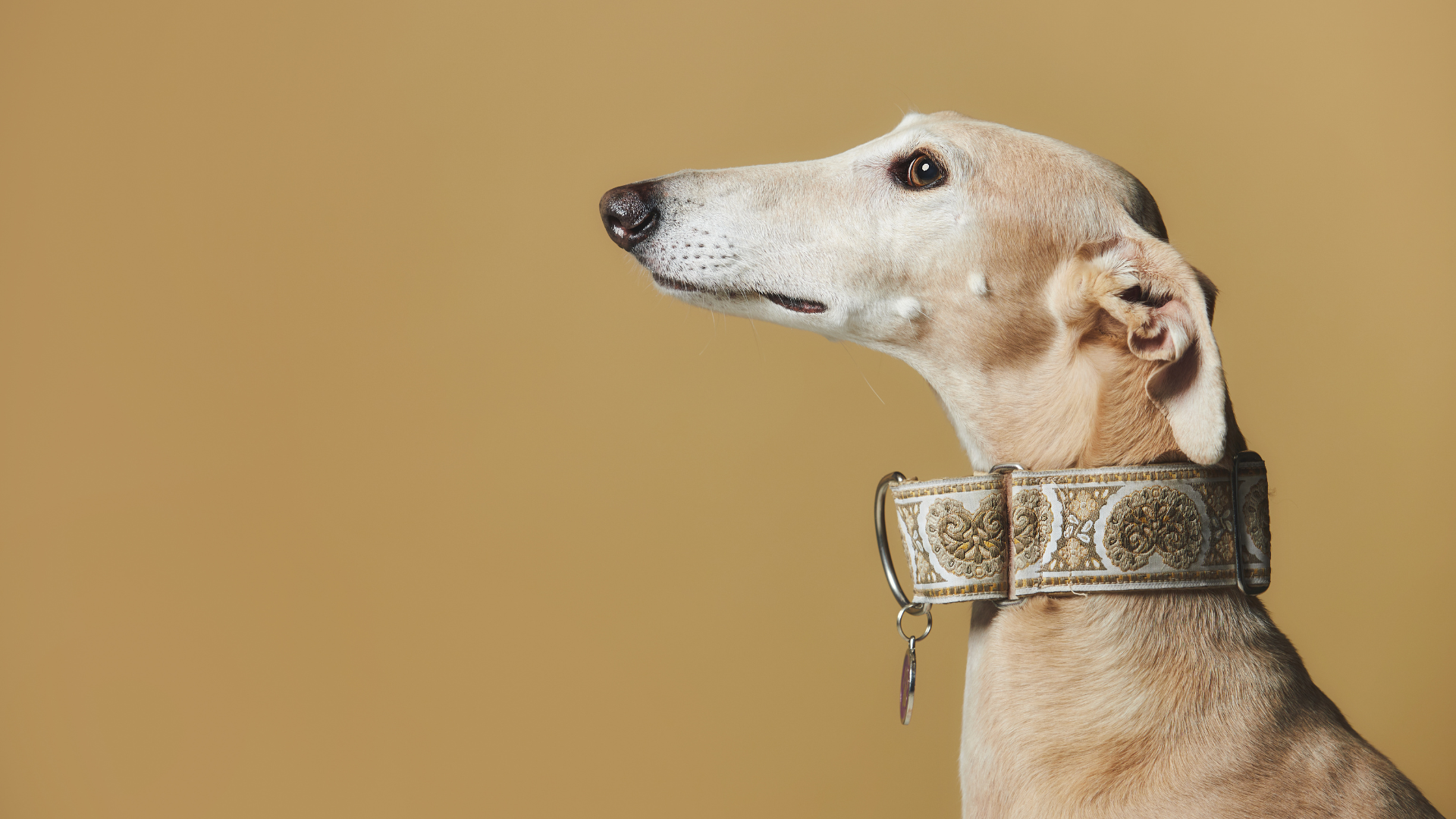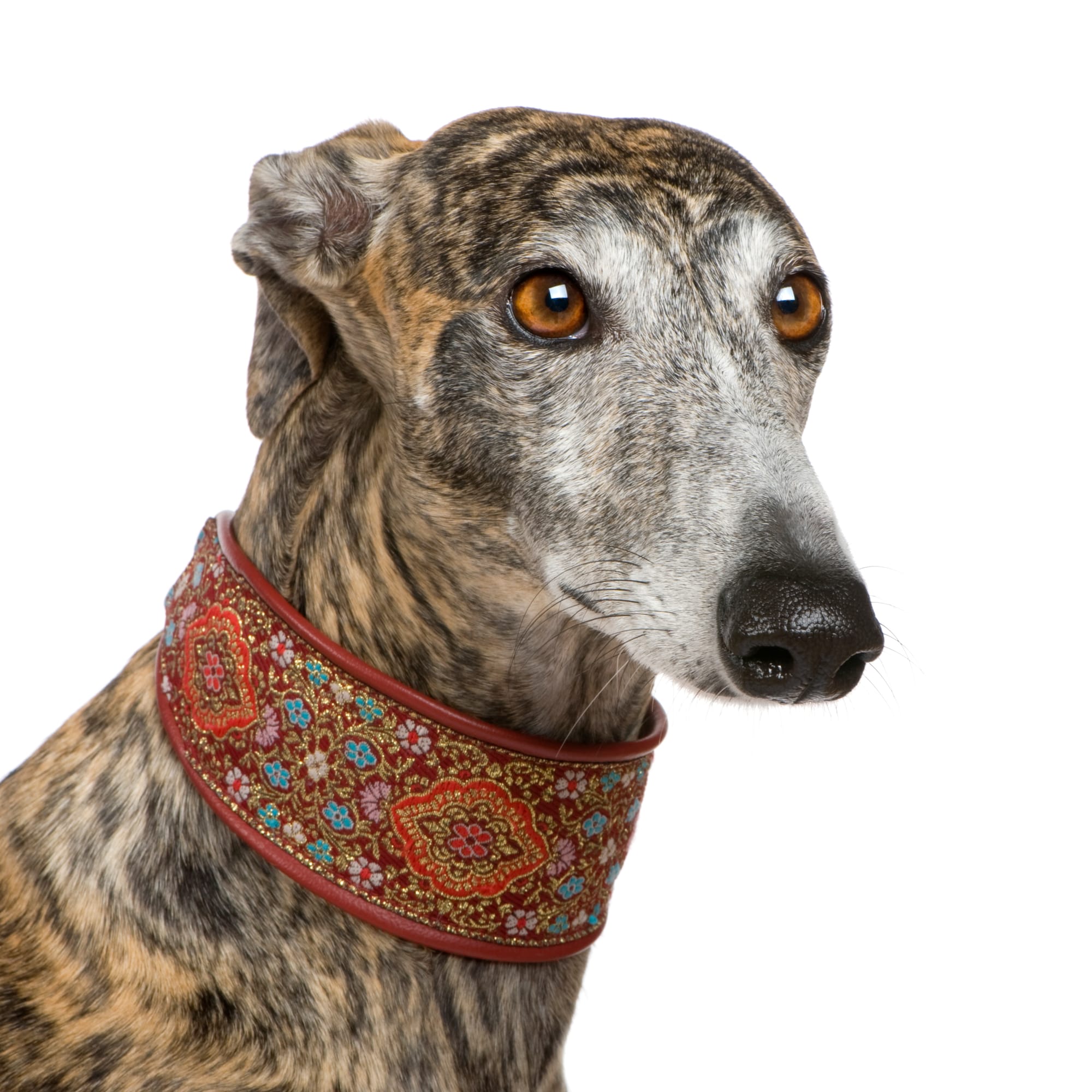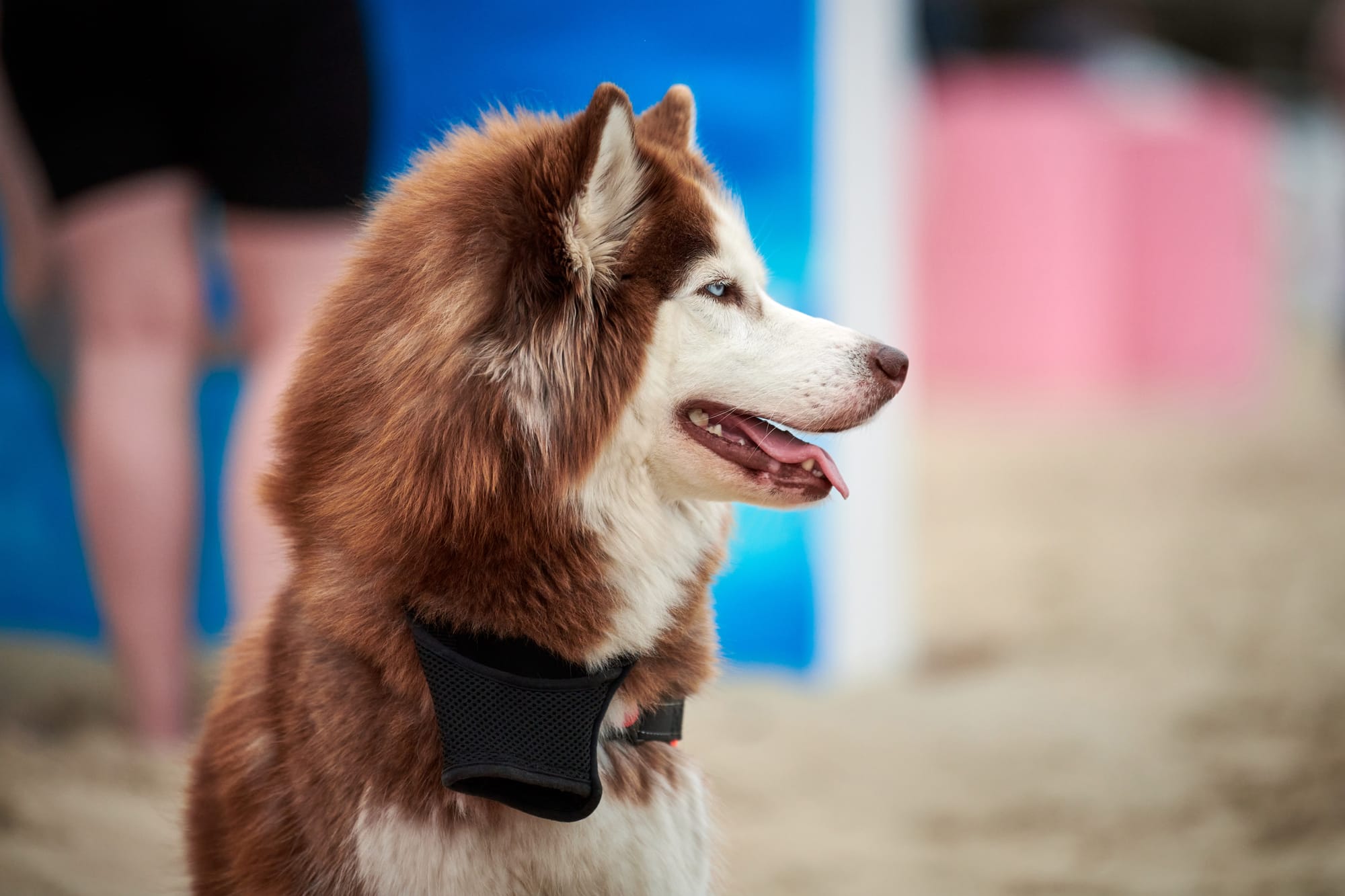A martingale collar is a type of dog collar that is designed to provide better control over a dog without choking or injuring them. It is often used for dogs that tend to pull or slip out of their collars, as it tightens when the dog tries to back out of the collar. The collar is made up of two loops - a larger loop that goes around the dog's neck and a smaller loop that tightens when the dog pulls on the leash.

Understanding the Martingale Collar is essential for dog owners who want to provide their pets with a safe and comfortable walking experience. Unlike traditional collars, martingale collars are designed to prevent choking, making them a safer option for dogs with sensitive necks or respiratory issues. They are also effective in preventing dogs from slipping out of their collars, which can be a major safety concern for dogs that like to run or chase after things.
When selecting a martingale collar, it is important to consider the size and breed of your dog, as well as any specific needs or preferences they may have. Proper Use of Martingale Collars is also important to ensure that your dog is safe and comfortable while wearing the collar. With the right selection and use, a martingale collar can provide a safe and effective way to control your dog during walks and other outdoor activities.
Key Takeaways
- Martingale collars are designed to provide better control over dogs without choking or injuring them.
- They are a safer option for dogs with sensitive necks or respiratory issues and can prevent dogs from slipping out of their collars.
- When selecting and using a martingale collar, it is important to consider the size and breed of your dog and ensure proper use for their safety and comfort.
Understanding the Martingale Collar
A martingale collar is a type of dog collar that is designed to provide better control and safety for dogs that tend to pull or slip out of traditional collars. This type of collar is also commonly known as a "limited slip collar" or "martingale slip collar". In this section, we will discuss the history and design of the martingale collar, how it works, and how it compares to traditional collars.
History and Design
The martingale collar was originally designed for sighthounds such as Greyhounds, Whippets, and Salukis. These breeds have a slender neck and a small head, which makes it easy for them to slip out of traditional collars. The martingale collar features two loops; one that goes around the dog's neck and another that tightens when the dog pulls or tries to back out of the collar. The tightening loop is usually made of chain or fabric, which helps to prevent choking or injury to the dog.
How It Works
The martingale collar works by tightening slightly when the dog pulls or tries to back out of the collar. The two loops of the collar prevent the collar from becoming too tight and choking the dog. The collar is designed to be comfortable for the dog to wear, while still providing enough control to prevent the dog from slipping out of the collar. The collar is also adjustable, which allows it to fit snugly around the dog's neck without being too tight.
Comparing Martingale to Traditional Collars
Traditional collars are designed to be worn around the dog's neck and are usually made of fabric or leather. These collars can be easily slipped over the dog's head and are secured with a buckle or clasp. However, traditional collars can be dangerous for dogs that tend to pull or slip out of their collars. The martingale collar provides better control and safety for these dogs, while still being comfortable and adjustable. The martingale collar is also a good option for dogs that have a sensitive trachea or neck injury.
In conclusion, the martingale collar is a great option for dog owners who want to provide better control and safety for their dogs. It is important to choose the right size and material for your dog's comfort and safety. With proper use and training, the martingale collar can be a valuable tool for both you and your dog.
Benefits of Martingale Collars
Martingale collars are a popular choice for many dog owners, especially those with sighthounds such as greyhounds and whippets. These collars offer several benefits over traditional collars, including preventing escape, providing gentle control, and an adjustable fit.
Preventing Escape
One of the main benefits of a martingale collar is that it helps prevent dogs from escaping. Sighthounds are known for their slender necks, which make it easy for them to slip out of traditional collars. However, martingale collars have a limited slip design that tightens when the dog pulls, preventing them from slipping out of the collar. This feature is especially important for dogs that like to chase after prey or have a tendency to pull on their leash.

Gentle Control
Martingale collars provide gentle control over a dog's movements. Unlike choke chains or prong collars, which can be harmful, martingale collars distribute pressure evenly around the dog's neck, preventing injury. This design also helps prevent dogs from pulling on their leash, making walks more enjoyable for both the dog and the owner.
Adjustable Fit
Another benefit of martingale collars is that they offer an adjustable fit. This is especially important for sighthounds, who have slender necks and can be difficult to fit with traditional collars. Martingale collars can be adjusted to fit snugly around the dog's neck without being too tight or uncomfortable. This ensures that the collar stays in place and provides the necessary control without causing discomfort to the dog.
Overall, martingale collars are a great choice for dog owners who want to provide their pets with a comfortable, secure, and effective collar. Whether you have a sighthound or a dog of another breed, a martingale collar can help prevent escape, provide gentle control, and offer an adjustable fit.
Selecting the Right Martingale Collar
When it comes to selecting the right martingale collar for your furry friend, there are a few key factors to consider. Here are some things to keep in mind:
Sizing and Fit
The first and most important aspect to consider when selecting a martingale collar is the sizing and fit. A properly fitting martingale collar should fit snugly around your dog's neck without being too tight or too loose. It should also have enough slack to prevent choking or discomfort, but not so much that your dog can slip out of it.
To ensure a proper fit, measure your dog's neck circumference and add two inches. This will give you the ideal collar size for your dog. Martingale collars come in various sizes, so be sure to choose the one that fits your dog's neck circumference.
Materials and Durability
Another important factor to consider when selecting a martingale collar is the materials and durability. Martingale collars are typically made from either nylon or leather, each with their own pros and cons.
Nylon martingale collars are lightweight, durable, and easy to clean. They are also available in a wide variety of colors and patterns, making it easy to find one that suits your dog's personality.
Leather martingale collars, on the other hand, are more durable and long-lasting than nylon collars. They are also more comfortable for dogs with sensitive skin, as they are less likely to cause irritation or rubbing.

Styles and Customization
Finally, consider the style and customization options available for martingale collars. Martingale collars come in a variety of widths, from thin and lightweight to thick and heavy-duty. The width you choose will depend on your dog's size and strength.
In addition to width, martingale collars also come in various styles and colors. Some feature reflective stitching for added visibility during nighttime walks, while others have personalized nameplates or embroidered designs.
When selecting a martingale collar, it's important to choose one that fits properly, is made from high-quality materials, and suits your dog's style and personality. By keeping these factors in mind, you can ensure that your furry friend stays safe and comfortable while out on walks.
Proper Use of Martingale Collars
Martingale collars are a popular tool for dog training, but it is important to use them properly to ensure the safety and well-being of your pet. Here are some guidelines for using martingale collars effectively:
Training and Usage
Martingale collars are designed to provide a gentle correction to your dog's behavior. They are especially useful for dogs that tend to pull on their leash or try to escape from their collar. It is important to use the collar as a training tool, not as a punishment. The collar should be fitted snugly around the dog's neck, but not so tight that it causes discomfort or choking.
A dog trainer can help you learn how to use a martingale collar effectively. They can teach you how to apply the collar correctly and how to use it to reinforce positive behavior. It is important to use the collar consistently and to provide positive reinforcement when your dog responds well to the training.
Safety Precautions
When using a martingale collar, it is important to supervise your dog at all times. Never leave your dog unattended while wearing the collar, as it could become caught on something and cause injury. Also, never use a martingale collar as your dog's primary collar. It should only be used during training sessions or walks.
It is also important to avoid using excessive tension on the collar. The collar should only be tightened enough to prevent your dog from slipping out of it. If your dog is pulling excessively on the leash, it may be time to take a break from training and reevaluate your approach.
Care and Maintenance
To ensure the longevity of your martingale collar, it is important to care for it properly. Regularly check the collar for signs of wear and tear, and replace it if necessary. Clean the collar regularly with mild soap and water, and avoid exposing it to harsh chemicals or extreme temperatures.
In conclusion, martingale collars can be an effective tool for training your dog, but it is important to use them properly. With the help of a dog trainer and by following these guidelines, you can use a martingale collar safely and effectively to reinforce positive behavior in your pet.

Martingale Collars for Different Breeds
When it comes to choosing a martingale collar for your dog, it's important to consider the breed and size of your dog. Different breeds have different needs when it comes to collars, and the martingale collar is no exception. Here are some considerations for different breeds:
Sighthound Considerations
Sighthounds such as Greyhounds, Italian Greyhounds, Salukis, and Borzoi have unique necks and heads that require a specific type of collar. Their necks are often wider than their heads, which means that traditional collars can easily slip off. Martingale collars are a great option for sighthounds because they provide a secure fit without choking or restricting breathing.
Small Dogs and Puppies
Small dogs and puppies have delicate necks that require a gentle touch. Martingale collars are a good choice for these breeds because they distribute pressure evenly around the neck, preventing injury. Additionally, the adjustable nature of martingale collars means that they can be tightened or loosened as your puppy grows.
Large and Strong Breeds
Large and strong breeds such as Mastiffs, Great Danes, and Rottweilers require a collar that can withstand their strength. Martingale collars are a good option for these breeds because they provide a secure fit without putting too much pressure on the neck. Additionally, the limited closure of the martingale collar prevents the dog from backing out of the collar and escaping.
Overall, martingale collars are a versatile and effective collar option for a wide variety of breeds. By considering the specific needs of your dog, you can choose a martingale collar that will provide a comfortable and secure fit.
Advanced Martingale Collar Topics
Training Techniques
Martingale collars are often used as a training tool for dogs that have a tendency to pull on their leash. When using a martingale collar for training, it is important to use positive reinforcement techniques to encourage good behavior. Trainers recommend using treats and praise to reward the dog when they behave correctly, rather than using aversive methods.
It is also important to use a proper lead with a martingale collar. A lead that is too long or too short can cause discomfort for the dog and make training more difficult. A shorter lead is recommended for training purposes, as it allows for better control of the dog's movements.
Behavioral Considerations
Martingale collars can be a good option for dogs that have a tendency to slip out of their collar or have a narrow head. However, it is important to consider the dog's behavior and temperament before using a martingale collar.
For example, if a dog is fearful or reactive, a martingale collar may not be the best choice as it can increase their anxiety and stress levels. In these cases, a harness or other alternative control option may be a better choice.

Alternative Control Options
While martingale collars can be effective for training and control, there are other options available. For example, harnesses can be a good choice for dogs that have a tendency to pull on their leash, as they provide more control over the dog's movements.
Positive reinforcement training can also be an effective alternative to using a martingale collar. By rewarding good behavior with treats and praise, dogs can learn to behave correctly without the use of aversive methods.
Overall, when using a martingale collar or any other training tool, it is important to consider the individual needs and behavior of the dog. With proper training and control, a martingale collar can be an effective tool for helping dogs learn good leash manners.
Frequently Asked Questions
- How do martingale collars work for dog training?
- Martingale collars are designed to provide gentle control over a dog's behavior. They work by tightening slightly when a dog pulls on the leash, preventing the dog from slipping out of the collar. This makes them a popular choice for dogs who have a tendency to back out of traditional collars.
- What are the benefits of using a martingale collar over a traditional collar?
- Martingale collars offer several advantages over traditional collars. They provide more control over a dog's behavior without causing discomfort or pain. They are also less likely to cause injury to a dog's neck than a choke chain or prong collar. Additionally, they are a good choice for dogs with narrow heads, such as greyhounds or whippets, who may be able to slip out of traditional collars.
- Can martingale collars be harmful or are they considered safe?
- When used correctly, martingale collars are considered safe and humane. They are designed to prevent a dog from slipping out of the collar without causing discomfort or pain. However, it is important to choose the right size and fit for your dog to ensure that the collar is not too tight or too loose.
- What types of dogs are martingale collars best suited for?
- Martingale collars are a good choice for dogs who have a tendency to back out of traditional collars or who need more control over their behavior. They are also a good choice for dogs with narrow heads, such as greyhounds or whippets.
- How does a martingale collar compare to a prong collar in terms of effectiveness?
- While both martingale collars and prong collars provide more control over a dog's behavior, martingale collars are generally considered to be a more humane and gentle option. Prong collars can cause discomfort or pain to a dog's neck, while martingale collars provide control without causing harm.
- What should I look for when choosing the best martingale collar for my dog?
- When choosing a martingale collar, it is important to consider the size and fit of the collar. The collar should be snug but not too tight, and it should be adjustable to ensure a proper fit. It is also important to choose a collar made from high-quality materials that will withstand wear and tear over time.





